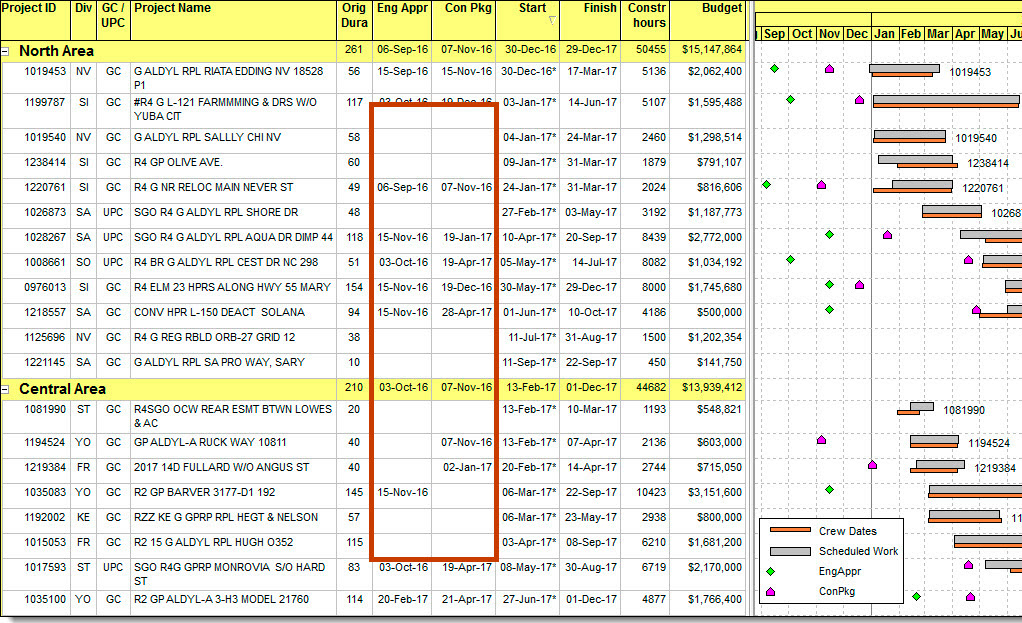Consolidated Construction Schedule
A process developed by DRMcNatty that combines data from systems into a conslidated P6 schedule for flexible summary schedules and portfolio resource planning.
A process developed by DRMcNatty that combines data from systems into a conslidated P6 schedule for flexible summary schedules and portfolio resource planning.
The client’s P6 annual portfolio included over 700 logic-driven schedules. The primary function of P6 was to plan and track the life cycle of the projects. One of the key stakeholders was the in-house construction group who planned and staffed crews. The construction group would initially plan using the P6 planned dates but then used a separate scheduling program for crew leveling and crew dispatch. Construction hour data was maintained in another system. Therefore they had two conflicting scheduling systems and wanted to have a more efficient unified enterprise solution.
The client used another system as their “system of record” where most project data was maintained and used. This system of record included P6 dates as well as the construction dates and hours from the crew dispatch tool. Issues developed related to the construction group frequently adjusting planned dates based on crew availability, which were not reflected in the P6 schedules.
Additionally, many smaller (less than $100k) projects were in the crew dispatch database but not in P6. This lack of visibility and timely updates resulted in an inconsistent view of the entire portfolio for construction planning.
DRMcNatty’s solution combined data from all of the systems into a “consolidated schedule” in P6 configured to summarize construction time periods with one line per project. Key project milestones were also plotted on this single line. The crew construction dates were compared by plotting below the P6 planned dates. Then any modifications could be easily isolated with the bar chart and reconciled. Construction hours maintained in other systems were imported to P6 for plotting in a histogram and to assist in crew leveling of the entire portfolio. An Excel spreadsheet was used to import directly to P6 resources to avoid impacting other P6 project data like an XER import would.
Each project line served as a summary schedule and overlaid the current construction system dispatch dates. On a regular basis, the differences were reviewed for impacts to the project and other projects. The histograms of the crew loading presented a clear picture of crew demand. This allowed decision making for assigning projects to inhouse construction or to outside contractors for peak periods. In addition, there were several benefits that were not originally the focus. The process allowed importing of other project data such as third-party constraints to enhance graphic reporting.
